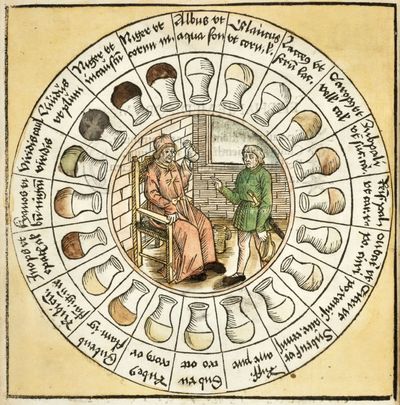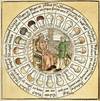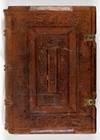first edition
1506
by PINDER, Ulrich
1506. Title flanked by 3 woodcut stars & a small man-in-the-moon (each hand-colored); on title verso a full-page circular woodcut of a physician demonstrating uroscopic analysis to a student, surrounded by a border of 20 urine glasses with xylographic abbreviated captions of different diagnoses (each hand-colored in different shades); table on Aii with the same urine glasses with full (unabbreviated) typographic captions, each hand-colored; smaller woodcut at beginning of each of three parts depicting a physician attending a patient in bed & performing the diagnostic procedure described in that section (the first finely hand-colored); and numerous (truncated)






